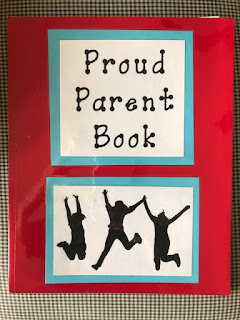You can take any seasonal objects like erasers, small toys, or natural items (leaves) and turn them into learning materials. Here are some ways to use bat rings and spider rings this month for hands-on math.
Note! I took my scissors and snipped off the ring part to make them easier to manipulate. I also removed the skeleton rings because I thought some parents might object. (I just try to keep everybody happy!)
Sort
Ask children to sort the rings. What was their sorting rule? Can they sort them another way?

Sets
Draw spider webs and label with numerals or number words. Children make appropriate sets.
*Use bat rings in spooky trees. Let children roll dice and make the amount.
Guess and Check
Put different amounts of rings in bags or cups. Write letters on the cups (A, B, C...). Children count and then record their answers.

Addition and Subtraction
Children can work out math problems with the spider rings.


Fill the Cup (I learned this from Carolyn Kisloski.)
Two or more children can play this game. You’ll need cups, plastic toys, and dice. Children take turns rolling a die and then counting out that many objects and placing them in their cup. The first one to fill their cup is the winner. To extend the game, continue playing to see who can empty their cup first.
*Use two dice so the children can practice addition.
Estimate
Fill a plastic jar with plastic toys. Children estimate how many and then write it on a sheet of paper with their name. At the end of the day count the objects. Who guessed more? Less? Who was closest?
Patterns
Can children continue a pattern with the toy rings? Can they create an AB, or ABB pattern?

Position
Give each child a spider ring. Can you put it above your head? Can you put it beside you? Can you put it between your knees? Etc.
Bats in a Cave
Make a cave from a disposable bowl by turning it upside down and cutting an arch as shown. Display a certain number of bats. Put some in the cave and ask children, "How many do you see? How many do you think are in the cave?"

Sort
Ask children to sort the rings. What was their sorting rule? Can they sort them another way?

Sets
Draw spider webs and label with numerals or number words. Children make appropriate sets.
*Use bat rings in spooky trees. Let children roll dice and make the amount.
Guess and Check
Put different amounts of rings in bags or cups. Write letters on the cups (A, B, C...). Children count and then record their answers.

Addition and Subtraction
Children can work out math problems with the spider rings.


Fill the Cup (I learned this from Carolyn Kisloski.)
Two or more children can play this game. You’ll need cups, plastic toys, and dice. Children take turns rolling a die and then counting out that many objects and placing them in their cup. The first one to fill their cup is the winner. To extend the game, continue playing to see who can empty their cup first.
*Use two dice so the children can practice addition.
Estimate
Fill a plastic jar with plastic toys. Children estimate how many and then write it on a sheet of paper with their name. At the end of the day count the objects. Who guessed more? Less? Who was closest?
Patterns
Can children continue a pattern with the toy rings? Can they create an AB, or ABB pattern?

Position
Give each child a spider ring. Can you put it above your head? Can you put it beside you? Can you put it between your knees? Etc.
Bats in a Cave
Make a cave from a disposable bowl by turning it upside down and cutting an arch as shown. Display a certain number of bats. Put some in the cave and ask children, "How many do you see? How many do you think are in the cave?"














































